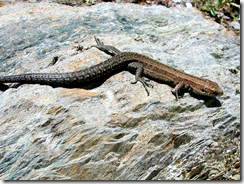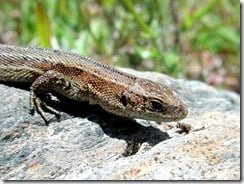In the hot seat this week, as it’s lizard season, it’s the common lizard.
 Did you know?:
Did you know?:
- Common lizards in Ireland are viviparous. Females give birth to 2-12 fully developed young.
- In warmer climates common lizards are egg layers rather than live-bearers.
- Common lizards are good swimmers and will often dive under water when threatened.
- … over to you, share your Amazing Lizard Facts in the comments.
“Did you know?” is a brand new series where you can contribute the most amazing facts you can find about a particular species or group. Each week we’ll feature a new “Did you know” post with three “starter” facts to get the ball rolling. Then it’s over to you… use the comment section below to share the most astonishing facts you can unearth in books and online with other Ireland’s Wildlife readers.
It’s a sort of collaborative “everything you ever wanted to know about this plant / animal but where afraid to ask”.
Hat tip to Fiona Harrison and Bill Hunter from the Ireland’s Wildlife community on Facebook for suggesting this great new series.










2 comments
Bill Hunter
The tail of some lizards separate from the body when the lizard is grabbed. The tail that is left behind wriggles, confusing the other animal. This defense gives the lizard time to escape. Another tail will grow back, but it will be shorter and of a different color.
Bill Hunter
Did you know; if viviparous (egg laying) and oviparous (live young bearing) populations of Common Lizards are bred together, there is significant embryonic malformation.